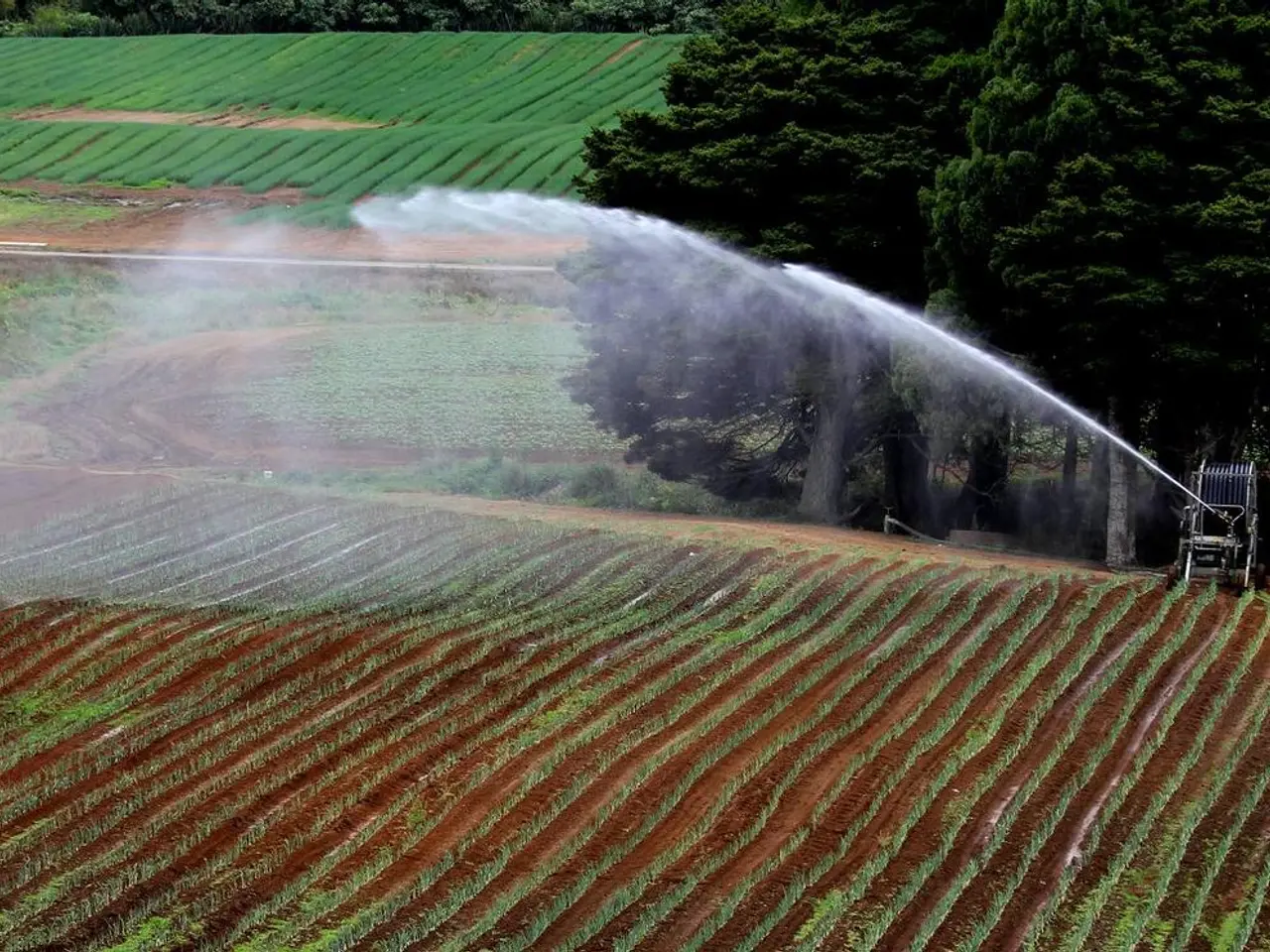Increased number of nutria endanger flood defenses
In a bid to control the spread and impact of nutria, an invasive species threatening flood protection and biodiversity in Germany, multiple measures have been employed. According to the German Hunting Association, more than a third (35 percent) of the participating hunting districts reported nutria occurrences in 2023.
The response to this invasive species includes targeted population control, legal measures, ecosystem protection, and multi-stakeholder collaboration.
Targeted Population Control
Nutria are captured through effective trapping methods to reduce their populations. Their burrowing and feeding habits damage riverbanks and flood protection structures, posing a significant threat to infrastructure.
Legal and Regulatory Controls
While specific Germany-focused regulations on nutria were not detailed, similar international policies prohibit or regulate possession, importation, and control of nutria to prevent their spread. Germany likely has analogous wildlife management laws targeting invasive species.
Ecosystem Monitoring and Habitat Management
Authorities track nutria populations and protect vulnerable floodplains and wetland ecosystems by restoring vegetation and reinforcing dikes to reduce damage caused by nutria burrowing. Reed areas, where the flow of rivers is usually slower, are nurseries for insects, amphibians, fish, and birds. Nutria's feeding habits can have serious consequences for biodiversity by making entire river sections free of reeds.
Public Awareness and Scientific Collaboration
Events and scientific exchanges such as “Science on the Spree” in Berlin bring together policymakers and scientists to discuss invasive species management strategies within broader climate adaptation frameworks.
Exploration of Innovative Utilization
While more documented in U.S. states like Texas, some regions explore promoting nutria as a food source to incentivize population control and raise awareness of the ecological harm caused by these rodents.
Not every district with nutria occurrences has problems with the animals. However, the German Wildlife Foundation also identifies local dangers from nutria, particularly in flood protection. Nutria dig meter-long tunnels in riverbanks and dikes, potentially endangering flood protection, and can make dikes very unstable, potentially requiring high funds for repairs.
The most occurrences of nutria are registered in the North German lowlands. Escaped and released animals now inhabit rivers and lakes in Germany. Nutria, a rodent species originally from South America, are also a concern in Germany due to their impact on biodiversity and flood protection.
It's worth noting that beavers are spreading in Germany, posing a threat to flood protection and species protection. Compared to other invasive species like raccoon dogs, the ecological damage caused by nutria is lower.
Nutria were kept on farms in Germany since the 19th century for their meat and fur. Mild winters and feeding promote the spread of nutria, according to experts. The Federal Agency for Nature Conservation (BfN) considers nutria as invasive species according to an EU regulation.
In conclusion, Germany's approach focuses on reducing population pressure while reinforcing vulnerable habitats and facilitating evidence-based policies informed by scientific research. The country's efforts aim to mitigate nutria’s negative effects on flood protection infrastructure and biodiversity.
- In an attempt to mitigate the ecological harm and threat to infrastructure, the approach in Germany involves the incorporation of science and innovation, such as exploring nutria as a potential food source to incentivize population control.
- Beyond population control, the focus on health-and-wellness and environmental-science is evident in the monitoring and protection of wetland ecosystems, with efforts directed toward restoring vegetation and reinforcing dikes to reduce nutria damage.
- The importance of fitness-and-exercise in the context of invasive species is demonstrated in the German Wildlife Foundation's identification of local dangers from nutria, particularly in flood protection, where the species' burrowing can potentially compromise flood protection infrastructure.




